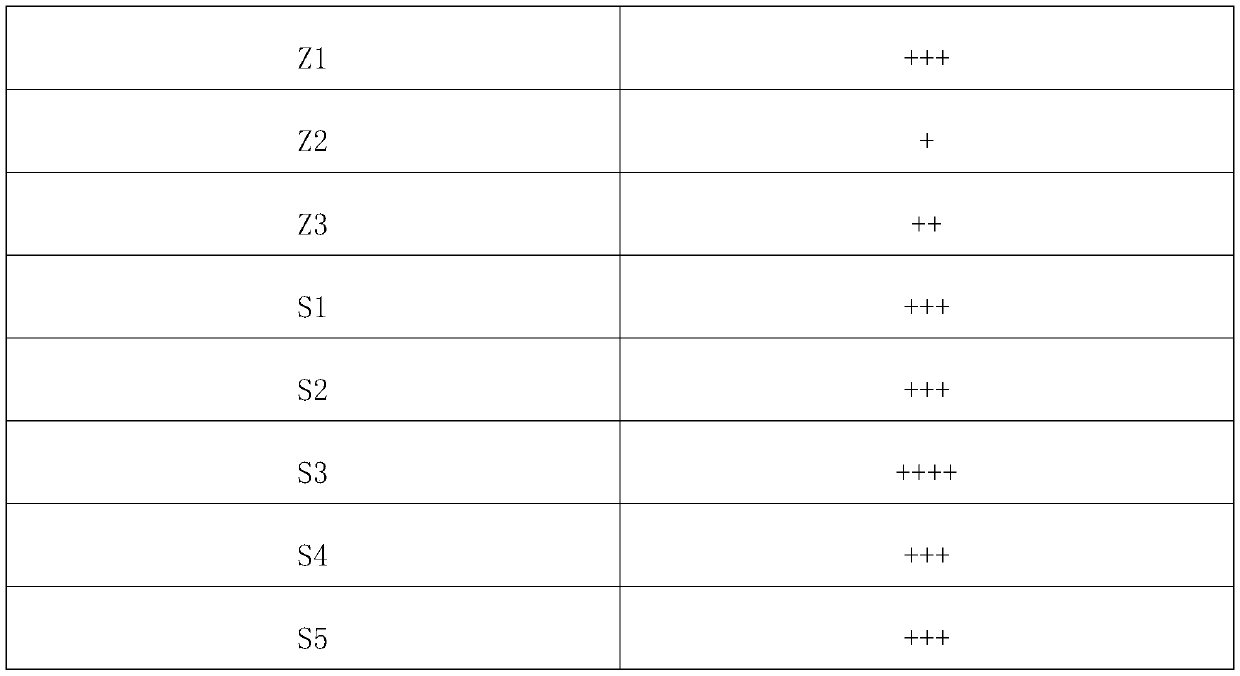Application of microbial deodorant
A deodorant bacteria agent and biological deodorization technology, applied in the field of microorganisms, can solve the problems of poor high temperature resistance and low applicability of deodorant bacteria, achieve the effect of good environment, improve immunity and growth speed
- Summary
- Abstract
- Description
- Claims
- Application Information
AI Technical Summary
Problems solved by technology
Method used
Image
Examples
Embodiment 1
[0018] Embodiment 1: Screening and identification of bacterial strains
[0019] NH 3 Selective medium: 50.0g sucrose, 10.0mL ammonia water, KH 2 PO 4 2.0g, MgSO 4 ·7H 2 O 0.5g, FeSO 4 0.1g, 1% ZnSO 4 5.0mL, NaCl 2.0g, distilled water 1000mL, sterilized at 121°C for 15min.
[0020] h 2 S selective medium: glucose 5.0g, K 2 HPO 4 0.5g, KNO 3 1.0g, MgCl 2 0.5g, NaCl 0.5g, NH 4 Cl 0.5g, Na 2 CO 3 1.0g, FeCl 2 0.01g, distilled water 1000mL, pH natural, sterilized at 121°C for 15min.
[0021] Screening of deodorant bacteria:
[0022] 1) Weigh 10g of pig manure and 10mL of leachate, add 100mL of NH 3 and H 2 Selective culture medium for S, 30°C, 220r / min shaker culture, replace the medium after 2 days, draw 10mL acclimatization culture solution and add it to 100mL fresh selective medium for second-generation acclimatization, continuous enrichment and acclimatization 4 times. Take 10mL of the enrichment solution in a conical flask containing 90mL of sterile w...
Embodiment 2
[0031] Embodiment 2: single bacteria deodorization
[0032] Single-bacteria culture: inoculate Bacillus flexus Z2 into NA medium, culture at 40-45°C for 14 days, and stir evenly to obtain Bacillus flexus culture fluid; inoculate Bacillus megaterium Z3 into In NA medium, cultivate at 30°C for 14 days, stir evenly to obtain a culture solution of Bacillus megaterium, and the number of bacteria in the two strains reaches 10 8 cfu / mL.
[0033] The test material is fresh pig manure, which is taken from the pig farm of Zhejiang Academy of Agricultural Sciences. 10kg of fresh pig manure is equally divided into 10 parts.
[0034] Control group 1: Put 1kg of fresh pig manure in a flat-bottomed container, flatten it and then evenly spray 10mL of NA culture solution. Place a 50mL small beaker containing 20mL 2% boric acid solution in a flat-bottomed container to absorb ammonia gas, and seal the bottle mouth;
[0035] Control group 2: Put 1 kg of fresh pig manure in a flat-bottomed cont...
Embodiment 3
[0053] Embodiment 3: mixed bacteria deodorization
[0054] The test material is fresh pig manure, and 10kg of fresh pig manure is equally divided into 10 parts,
[0055] Test group 9: Mix the Bacillus flexus culture solution obtained in Example 1 with the Bacillus megaterium culture solution at a ratio of 1:1 to obtain a mixed culture solution 1. Put 1 kg of fresh pig manure in a flat-bottomed container, flatten it and then evenly spray 10 mL of the above-mentioned mixed culture solution 1. Place a 50mL small beaker containing 20mL 2% boric acid solution in a flat-bottomed container to absorb ammonia gas, and seal the bottle mouth;
[0056] Test group 10: Mix the Bacillus flexus culture solution obtained in Example 1 with the Bacillus megaterium culture solution at a ratio of 1:1 to obtain a mixed culture solution 1. Put 1 kg of fresh pig manure in a flat-bottomed container, flatten it and then evenly spray 10 mL of the above-mentioned mixed culture solution 1. Place a 50mL...
PUM
 Login to View More
Login to View More Abstract
Description
Claims
Application Information
 Login to View More
Login to View More - R&D
- Intellectual Property
- Life Sciences
- Materials
- Tech Scout
- Unparalleled Data Quality
- Higher Quality Content
- 60% Fewer Hallucinations
Browse by: Latest US Patents, China's latest patents, Technical Efficacy Thesaurus, Application Domain, Technology Topic, Popular Technical Reports.
© 2025 PatSnap. All rights reserved.Legal|Privacy policy|Modern Slavery Act Transparency Statement|Sitemap|About US| Contact US: help@patsnap.com



